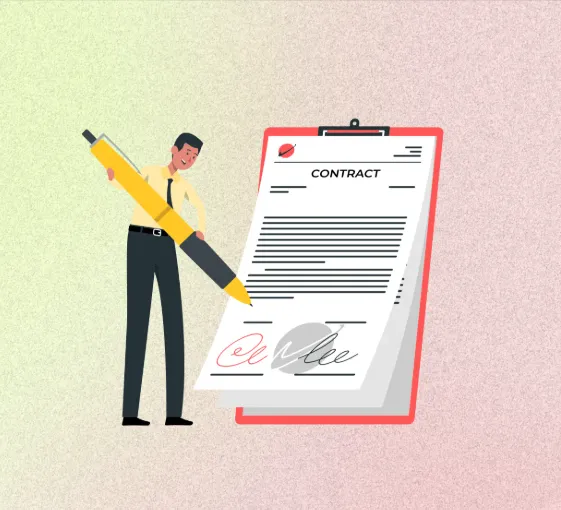In today’s fast-paced digital world, businesses are increasingly turning to SaaS (Software as a Service) solutions to boost efficiency, drive innovation, and reduce operational costs. However, as organizations depend more on these tools, they face a growing challenge: how to effectively manage SaaS contracts. Without strong contract management, companies risk running into inefficiencies, hidden expenses, compliance issues, and missed opportunities to optimize their software spend.
For IT leaders, mastering the art of SaaS contract management is not just an operational necessity, but a strategic one. Below, we outline five key strategies that can help organizations streamline their SaaS contract management, reduce risks, and take greater control of their software investments.
1. Centralize Your SaaS Contract Management for Better Oversight
A major hurdle in SaaS management is the decentralized nature of contracts, often spread across different departments. Without a unified system to manage these contracts, it’s easy to lose track of important details like renewal dates, service level agreements (SLAs), and vendor performance. This lack of visibility can result in costly mistakes, such as missed renewals or overpaying for unused software.
By centralizing SaaS contract management into a single platform, organizations can consolidate all contract data and gain a comprehensive view of their software landscape. With a centralized system, IT leaders can see everything from pricing and terms to vendor performance, making it easier to align software costs with organizational goals. This not only helps mitigate compliance risks but also empowers better negotiation with vendors, ensuring favorable terms for the business.
2. Automate Renewals to Avoid Extra Costs and Downtime
SaaS contract renewals can be time-consuming and error-prone, leading to unnecessary costs and service disruptions if not properly managed. Without automation, it’s easy to miss renewal deadlines or renew contracts without assessing the vendor’s performance.
Automating the renewal process is one of the best ways to streamline SaaS contract management. By setting up automated reminders and alerts, IT teams can ensure they never miss critical deadlines. This proactive approach provides an opportunity to assess the software’s value, renegotiate terms, eliminate underutilized licenses, and redirect resources to more important areas of the business, ultimately maximizing ROI from SaaS investments.
3. Integrate SaaS Management with Procurement for Smoother Operations
SaaS management doesn’t just impact the IT department—it spans across procurement, finance, and other parts of the organization. To achieve effective SaaS contract management, all departments need to be aligned and working from the same data set.
Integrating SaaS management into procurement workflows helps align software purchasing with broader organizational strategies. This integration enables procurement teams to compare vendors, track spending, and ensure compliance with corporate policies. By automating key aspects of the contract management process, IT and procurement teams can work together to negotiate better deals, identify cost-saving opportunities, and prevent SaaS sprawl—where unnecessary software subscriptions multiply without oversight.
For IT leaders, collaborating closely with procurement not only enhances financial control but also reduces the risk of SaaS sprawl, which can lead to wasted resources and increased complexity.
4. Proactively Monitor Compliance to Mitigate Risk
As SaaS solutions become more integrated into everyday business operations, maintaining compliance with industry regulations and internal policies is essential. Whether it’s complying with data protection laws like GDPR or ensuring that vendors meet specific security standards, managing compliance manually is increasingly unsustainable.
SaaS management platforms with built-in compliance tracking tools allow IT teams to monitor vendor performance in real time, ensuring that all contractual obligations are met. Automated alerts and audits make it easier to stay on top of compliance requirements, reducing the risk of data breaches, regulatory violations, or costly fines. Additionally, these platforms can help track security certifications, giving businesses peace of mind that all vendors meet the necessary standards to mitigate potential risks.
5. Gain Better Financial Control and Improve Forecasting Accuracy
SaaS contract management isn’t just about tracking performance and compliance—it’s also about achieving better financial oversight. With numerous subscription-based services, it’s easy for costs to spiral out of control if there’s no clear visibility into usage and spending.
By streamlining SaaS contract management, businesses can gain deeper financial insights, allowing IT teams and finance departments to forecast costs more accurately and optimize their software spending. Consolidating all contract details, such as license usage, spend history, and renewal terms, enables organizations to gain a clearer understanding of their SaaS investments. This visibility makes it easier to plan budgets, eliminate redundant subscriptions, and align SaaS expenses with actual demand.
With better control over SaaS costs, companies can prevent the SaaS sprawl that often leads to unnecessary spending. This level of financial oversight not only improves cost predictability but also ensures that software investments remain in line with business needs.
Conclusion
In the era of digital transformation, effective SaaS contract management is no longer a behind-the-scenes task. For IT leaders—whether CIOs, CTOs, or procurement managers—it has become a critical tool for driving business success. By centralizing contract data, automating renewals, fostering collaboration across departments, monitoring compliance, and gaining better financial control, organizations can unlock the full potential of their SaaS investments.
By implementing these five strategies, businesses can enhance their SaaS contract management process, enabling them to stay agile, competitive, and financially efficient in an increasingly complex digital environment.







